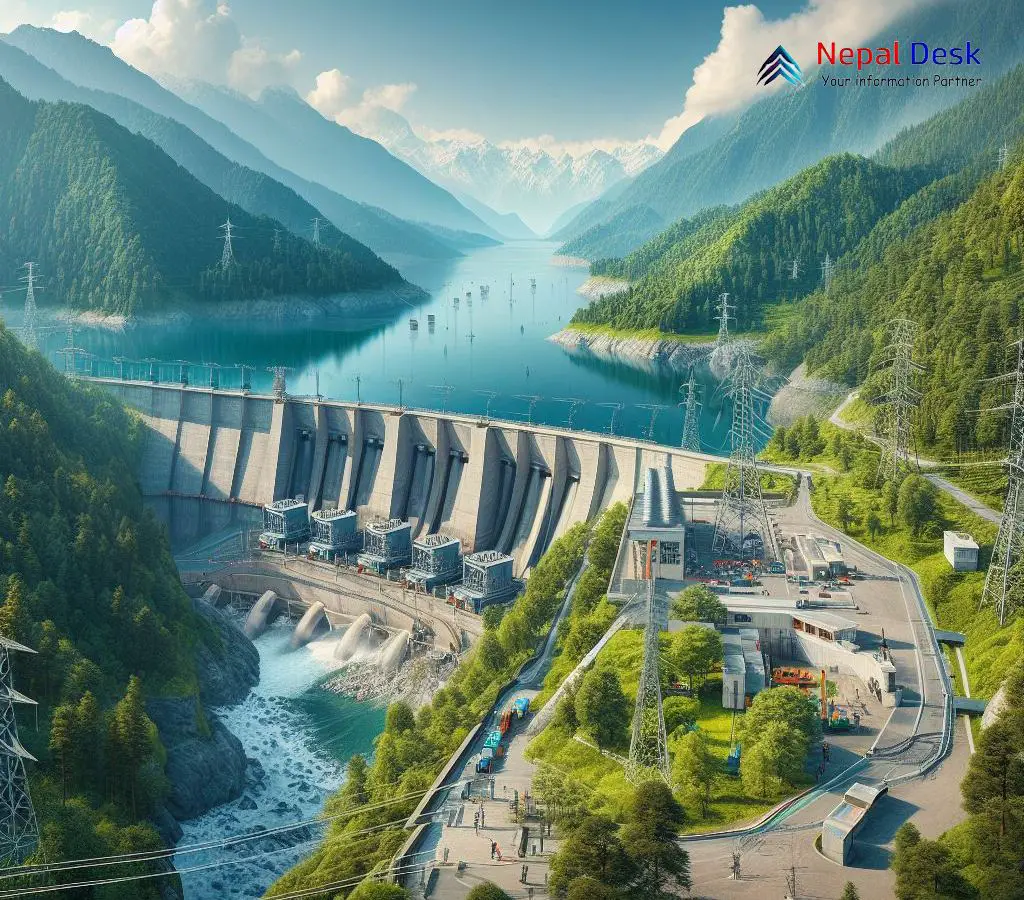Nepal's NEA Earns Rs 11.8 Billion Exporting Electricity to India
Published Date

Published Date
Nepal generated Rs 11.8 billion by exporting electricity to India, supporting foreign reserves, reducing the trade deficit, and promising a better tomorrow.
⏱ 3 min read
The Nepal Electricity Authority (NEA), a state-run organization, has reported a net income of Rs 11.828 billion from selling excess electricity to India since June 11. During the current financial year of 2023-24 between mid-July and mid-October, the authority earned Rs 9.645 billion by exporting power to India. In just one month, from mid-September to mid-October, they traded surplus electricity worth Rs 4.235 billion with India. Throughout this time, the average rate per unit for exported power was Rs 9.18.
NEA has been exporting around 110 MW of electricity to the Indian firm NTPC Vidyut Vyapar Nigam Ltd (NVVN) using both the day-ahead market of Indian Energy Exchange Ltd (IEX) and a medium-term power agreement. The Central Electricity Authority, part of India's Ministry of Electricity, has approved NEA's export of 632 MW of electricity to the competitive market: 522 MW going to various buyers and 110 MW to NVVN. This is made possible through the Dhalkebar-Muzaffarpur 400 kV cross-border transmission line (562 MW) and the Mahendranagar-Tanakpur 132 kV transmission line (70 MW). Kulman Ghising, managing director of NEA, highlighted that these exports are strengthening Nepal's foreign exchange reserves and reducing their trade deficit with India.
Ghising went on to say that, based on current conditions, it seems like Nepal might export electricity worth around Rs 16 billion this year. They've sent a proposal to the Central Electricity Authority of India to export an additional 100 megawatts but have yet to receive approval. Ghising remains hopeful that they will get approval soon since domestic energy demand is expected to decrease during the festival season and as winter approaches in Kathmandu. Additionally, Ghising mentioned that efforts are being made to improve infrastructure, work on electrification projects for areas without electricity, and expand the cross-border transmission network between the two nations to export surplus power.
Hydropower is a vital source of income for Nepal. Currently, there are more than 50 hydroelectric projects in Nepal, some state-owned and some privately owned and operated. The Asian Development Bank's report suggests that utilizing Nepal's hydropower potential can lead to economic growth, reduce poverty levels, and offer environmental and climate change mitigation benefits. The report also indicates that hydropower could play a significant role in the South Asian region, which has a growing demand for clean, affordable, and dependable energy.
Harnessing hydropower has positively impacted Nepal's economy and society. By generating electricity from hydropower projects, they have created job and income opportunities for locals, consequently reducing poverty and improving living standards. In the long run, expanding hydropower generation increases domestic income, reduces real domestic energy prices, alleviates poverty significantly, and offers protection against oil price hikes.
To secure a low-carbon economic growth path for the future, Nepal should consider investing its hydropower revenue wisely to develop the much-needed transport infrastructure, power it with electricity, and develop industries. Currently boasting an immense hydropower potential of approximately 40,000 MW, Nepal has only harnessed a drop of it so far. This means the majority of economically viable power generation hasn't been realized yet. Though this current news is very satisfying, what is important is that the process continues in a positive way. Many more big hydroelectric projects, like Budi Gandaki, Karnali, Upper Tamakoshi, Pancheshwor, Upper and Lower Arun, and many others, are in some level of development, which is a very good sign.
